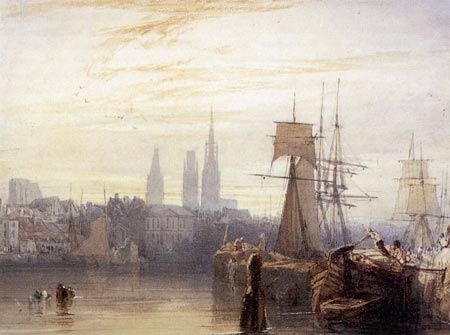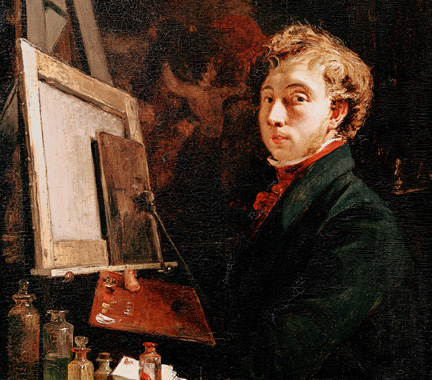Otherwise known as Warwick the Kingmaker.
Since Richard III has been in the news as of late (and there
was much rejoicing), I believe the time is right to give his cousin his due.
Despite being twenty-four years older than Richard III, Warwick was his first
cousin. This happens when your grandfather has fifteen children (with his
second wife; he had a bunch more with his first). Warwick’s father, Richard,
earl of Salisbury, was one of the eldest children, while Richard III’s mother,
Cecily, was the youngest.
Richard, earl of Warwick, was born on 22 November 1428. He
was betrothed to Anne Beauchamp when he was six (and she was eight). In 1449,
Anne’s niece died and she and Richard inherited the earldom of Warwick. Richard
Neville became Earl of Warwick in right of his wife.
Skipping ahead a few years, Warwick was extremely
influential during the Wars of the Roses. After the First Battle of St. Albans
(1455), Warwick became the Duke of York’s right-hand man. Long story short, he
was extremely influential in putting the House of York on the throne. When the
Duke of York was killed at the Battle of Wakefield (30 December 1460), Warwick
threw his support behind York’s son Edward, earl of March. With Warwick’s backing,
in early 1461, Edward was able to claim the English throne as King Edward IV.
Edward recognized that he owed Warwick big time. He showered
the man with favors and even sent his younger brother (the future Richard III)
to Warwick’s northern castle of Middleham to be trained in the knightly arts.
But the honeymoon period was not to last. In 1464, Edward disregarded Warwick’s
carefully-arranged diplomatic marriage and married Elizabeth Woodville, a noble
English widow. Elizabeth had a large family, and Edward proceeded to reward
them. Historians disagree on whether Edward extravagantly rewarded the
Woodvilles or kept within the bounds of reason (forming a loyal affinity), but,
suffice it to say, Warwick was pissed. The earl became even more upset when
Edward began to pursue a foreign policy he did not agree with. Furthermore,
Edward, as he matured, was becoming his own man. The king had been young – only
eighteen – when he first ascended the throne, but he became more confident and
more willing to exert his authority as he grew older. This meant that Warwick
needed to be content with a smaller role (after all, he was not king); this was
something Warwick found very hard to accept. It eventually led to a complete
breach between the two.
In 1469, things came to a head. The Neville family fanned
the fires of popular discontent and created a few uprisings. In July, Warwick,
with his elder daughter Isabella and Edward’s brother George, duke of Clarence,
sailed to Calais; in Calais, George and Isabella married. George then joined
with Warwick is condemning his brother’s rule. The icing on the cake, for
Warwick, came when Edward’s army was defeated in battle and the king was
captured. He was kept as a personal prisoner of Warwick, who had the imprisoned
king stay at his castles. Luckily for Edward, people got wind of what Warwick
had done and, fearing that Warwick would replace Edward with his brother George,
rebelled again. Warwick was forced to release Edward so that the king could put
down the rebellion.
In the winter of 1469-70, the king and Warwick tried to
resolve their differences. It didn’t work; Warwick took his family and left for
France, while Edward set about systematically dismantling Warwick’s network of
supporters. The big shock came when Warwick allied with Margaret of Anjou, former
queen of England.
If you know anything about the Wars of the Roses, you
already have an inkling of why this alliance was shocking: Warwick was a Yorkist
while Margaret was a Lancastrian queen. The Yorkists had usurped the throne of
Margaret’s husband, Henry VI, and (probably a more grievous sin in her eyes)
denied her son his birthright. Warwick, in fact, back in the 1450s, had even
said that Margaret’s son was a bastard – so the two weren’t exactly friends. It
was a sign of how desperate both parties were that they allied. Warwick’s
younger daughter Anne married Margaret’s son (another Edward) to seal the deal.
Warwick then returned to England to put Henry VI, who had been chilling in the
Tower of London for a decade, back on the throne.
Initially, Warwick was successful. On the verge of being
trapped between one of Warwick’s armies in the north and one in the south, Edward
and his allies fled to the Low Countries in autumn 1470. Warwick restored Henry
VI to the throne. But Edward was able to secure support from the Duke of
Burgundy and he and his followers returned to England in March 1471. The two
camps began marching towards each other, preparing for pitched battle. Warwick
probably felt confident he could defeat Edward, but the earl’s hopes were
undermined when George, duke of Clarence, finally decided to return to his
brother’s side. On Easter Sunday, 14 April 1471, the two sides met at Barnet
(now part of greater London). Warwick was killed in battle and Edward was
victorious.
Edward’s throne was secure after the Battle of Tewkesbury on
4 May 1471. Margaret of Anjou’s son was killed and Margaret herself captured.
She was kept imprisoned in England for a time until the French king ransomed
her. Henry VI was murdered (or died of melancholy if you are a die-hard Yorkist
who believes propaganda). Anne Neville, younger daughter of Warwick and widow
of Margaret’s son, married the future Richard III and eventually became Queen
of England (for a brief while).
Although Warwick had held his earldom in right of his wife
(who was very much alive and would remain so until 1492), all his lands were
confiscated and doled out to George and Richard, the king’s brothers and
Warwick’s sons-in-law. This was pretty shitty to the countess, but Edward
needed to reward his brothers and using someone else’s land was the easiest,
cheapest way. The countess of Warwick eventually went to live with Richard and
Anne in northern England (presumably by choice, but we’ll never know for sure).
Warwick is called “the Kingmaker” became he made and unmade
both Edward IV and Henry VI. As you might expect from a man who makes kings,
Warwick was a tad on the arrogant side. Nevertheless, he had real grievances
against Edward IV. The whole incident just shows what a debacle the Wars of the
Roses were; it was not one of England’s finer moments.
Source:
A. J. Pollard, “Neville, Richard, sixteenth earl of Warwick and sixth earl of Salisbury [called the Kingmaker] (1428–1471),” Oxford Dictionary of National Biography,
Oxford University Press, 2004; online edn, Jan 2008 [http://www.oxforddnb.com,
accessed 19 Sept 2012]









